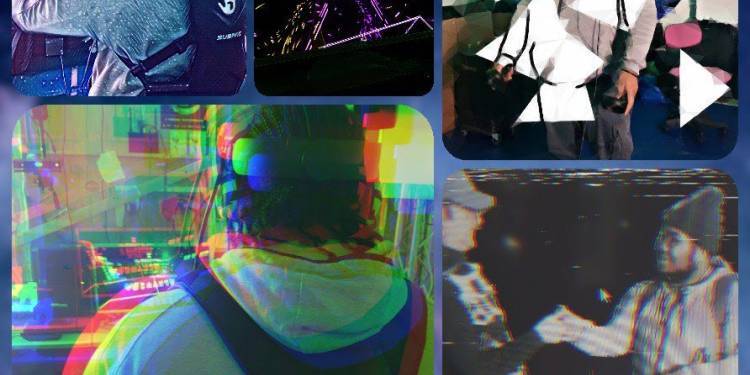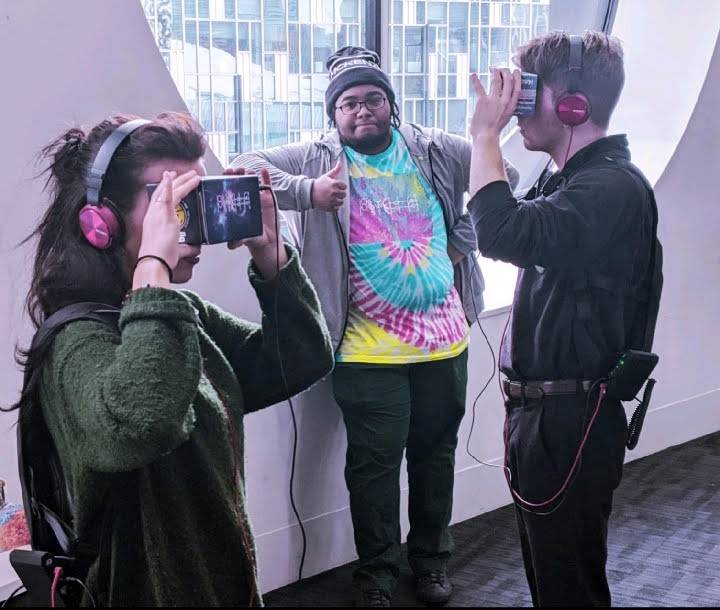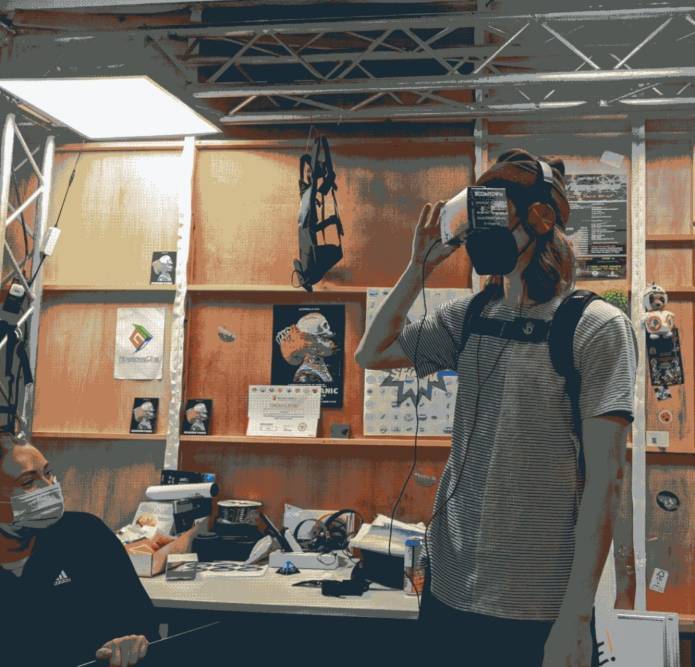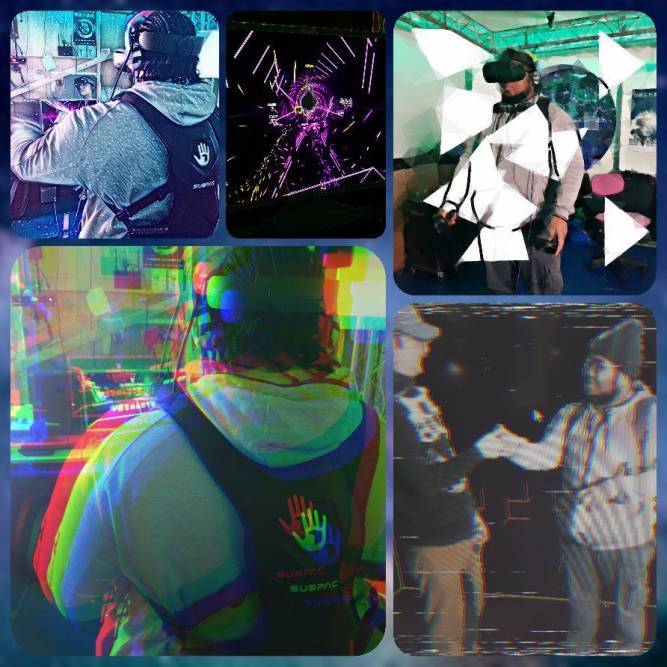Engaging young people through immersive storytelling

Article by: Gaynor Orvis
Publication date:BA (Hons) Motion Graphics graduate Colin Foster is on a mission to use immersive storytelling to engage young people and to offer an alternative way of using technology.
hide
Here BA (Hons) Motion Graphics graduate, Colin Foster discusses his involvement with SEEDS, Ravensbourne’s Self Employment Entrepreneurship Scheme and his recent collaboration with PlayLa.bZ.
SEEDS is designed to support the natural skills of Ravensbourne's neurodivergent students and those from diverse backgrounds in setting up their own business or freelance careers. As part of the SEEDS programme, Colin was awarded a mentor to work closely with. Because of his desire to work in the immersive sectors, Colin was partnered with James Edward Marks, the founder of PlayLa.bZ. Together they have been working on an exciting programme with the East London Dance company to engage school children with immersive technology through the medium of dance.
We caught up with Colin and James to find out more.
hide

hide
Colin, how did you get involved initially with PlayLa.bZ?
Colin: I got involved with PlayLa.bZ through the SEEDS programme, where I was introduced to my mentor, James, who heads up PlayLa.bZ. PlayLa.bZ is a transformative creative space for students and businesses to collaborate and explore ideas using emerging technology and creative media, which is housed in Ravensbourne.
At Ravensbourne I studied on the BA (Hons) Motion Graphics course, but after graduation I felt I wanted to explore more about immersive technology, so PlayLa.bZ was a perfect fit. The work that PlayLa.bZ do is something that really inspires me.
I knew I wanted to move into the immersive industry, but I also knew that this was a hard industry to crack – so James was a brilliant contact to have.
We ended up collaborating on a number of different projects. I decided pretty early on that I wanted a name to reflect the work that I was doing, so that’s how my name ‘Black Matter Reality’ was born. This is my metaverse pseudonym.
The birth of Black Matter Reality
The name came about because I am really interested in the concept of dark matter. The universe is made up of 65 per cent dark matter, but we still don’t really know what it is – I find this so fascinating. So that’s how the name ‘Black Matter Reality’ was created.
Can you tell me a little but about some of the recent work you have been doing with PlayLa.bZ?
Colin: I’ve been leading on a few of the collaborations, including some work using GenieMo, the DIY multi-dimensional motion arts capture software that was created by the PlayLa.bz team.
I have recently been working on a project with East London Dance, an organisation hosting dance classes for all age groups, including children aged 7-17 in East London.
The project which is called ‘VR Dance’, is a free programme for schools or specialist education providers in the East London area. Working with East London Dance, BirdGang, Maskomi & GenieMo we were teaching children to play around with future technologies while dancing and having fun.
We were working with a number of different schools over lockdown and teaching them about using 3D software. This actually transpired in us producing a virtual concert with some of the schools.
As part of the programme, we teach children about motion capture – technology, which can be used to record the movement of people or objects.
We started by encouraging the children to start dancing, singing and playing around with different technology. We were using SUBPAC switches, which provide a really powerful sound – about as powerful as you would experience on a festival dancefloor. We were also using other audio-based software which give you the vibration of the music.
Working with reform school students
As part of the VR Dance collaboration, we went to a reform school for children that had been expelled from their schools.
Because of their behavioural issues, the children were struggling to stay in mainstream schools and many of them had short attention spans and struggled with staying on task.
Through our sessions with them, we were able to show them that there were alternative ways to learn. Through the sessions, we were able to encourage them to be creative and to use the 3D software as a way of expressing themselves.
Did you feel the students were engaged with the programme?
Colin: Yes, they were really interested from the beginning. Interestingly, out of the five schools that we visited, the children from the reform school were the most engaged I would say.
I think meeting someone like myself, who has come from a similar background, and who is neurodivergent and has also struggled with mainstream school was quite inspiring for them.
I think it really offered them an alternative. They could see that they could use their differences to their advantage, as it allowed them to think in a different way.
What opportunities do you think these future technologies offer for neurodivergent individuals?
James: PlayLa.bZ were invited in 2020 to talk at Microsoft EduWeek alongside Imperial College London, and I invited Colin along.
I asked Colin to put together a slide for me which tried to express how his brain functions. It was basically a mix of the alphabetical order and I think it did a great job of illustrating how he sees the world.
There is research being carried out at the moment which suggests that the neurodivergent brain can think in a more multi-dimensional way. And so, neurodivergent individuals like Colin are perhaps better built to be able to imagine these emerging virtual spaces. That opens so many opportunities for future roles working with these new technologies.
I think some of the more mind-expanding creativity comes from these great neurodivergent minds precisely because they are able to think outside the confines of our reality.
These new interactive technologies like augmented reality, virtual reality and mixed reality offer people like Colin an opportunity to connect on a totally new level.
It just highlights that we’ve been conditioned into using technology a traditional way, but there are other ways that it can be used too, outside the constraints of our imaginations.
Colin: Yeah, just thinking back to the young people in the reform school, a lot of them had a lot of trouble concentrating, but this immersive technology was able to really hold their attention.
I think it’s so important to keep building these tools and different ways of working that neurodivergent young people can utilise – it could really open doors for them in their careers.
What are some of the benefits of being involved with seeds?
Colin: Because of SEEDS I’ve been given this opportunity to work with PlayLa.bz. It’s really been a great chance to work within the immersive industries and to see where my talents really lie. It’s been great to work with immersive storytelling and to give back to communities with these stories too.
Working with young people that have had a similar background to me and being able to inspire them to find their passion is something that feels really important.






